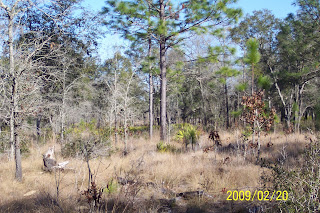I am still working at my consulting job by day and working towards getting the FieldTaught Concept together as a full time occupation. Lately, at my day job I have been performing many biological surveys all over the country. I rarely stay in the office for more than a week. Next week I am conducting Threatened and Endangered species surveys in North Florida. This is the part of the job I really enjoy and want to teach others how to get a job and do this. I took some photographs of some of the locations where I have worked lately. I am not a professional photographer. I use a digital camera and point and click. 



This is a desert grassland in the Sonoran Desert in Southern Arizona. I do a LOT of work in Arizona. It is very beautiful and it was not too hot when I was here. It was probably 75F when I started and 90F by the time I was through. There was almost no humidity, that is always nice but you have to be diligent about staying hydrated. I use a camelback (I will put one on the side bar) they are great. I use it anytime I am not really close to the vehicle.

This is a photograph of Chihuahuan Desert Scrub. It is very dry and rocky, but a good place to find lizards, snakes, and small mammals. Again, in low humidity the sweat evaporates off of your body so fast you can forget to drink water. My two best safety tips for this type of habitat. 1. HYDRATE, HYDRATE, HYDRATE! 2. Always watch where you put your feet. That tip is pretty much for all habitats. If you watch where you put your feet, you will never step on a venomous snake. Some people I work with wear snake chaps, I do not, but that is a personal preference. I have worked with and around snakes for 20 years. I respect them but do not fear them, but you cannot let your guard down-always be vigilant.

This photograph was taken in North Florida while surveying for gopher tortoises. This type of habitat is similar to that of the property I plan to use for the initial FieldTaught courses. I grew up in the Southeast US and learned the plants and animals of Southeastern Forests during my BS and MS programs. I moved to the Southwest US to work on a PhD, where I learned the plants and animals of the Southwest.



No comments:
Post a Comment